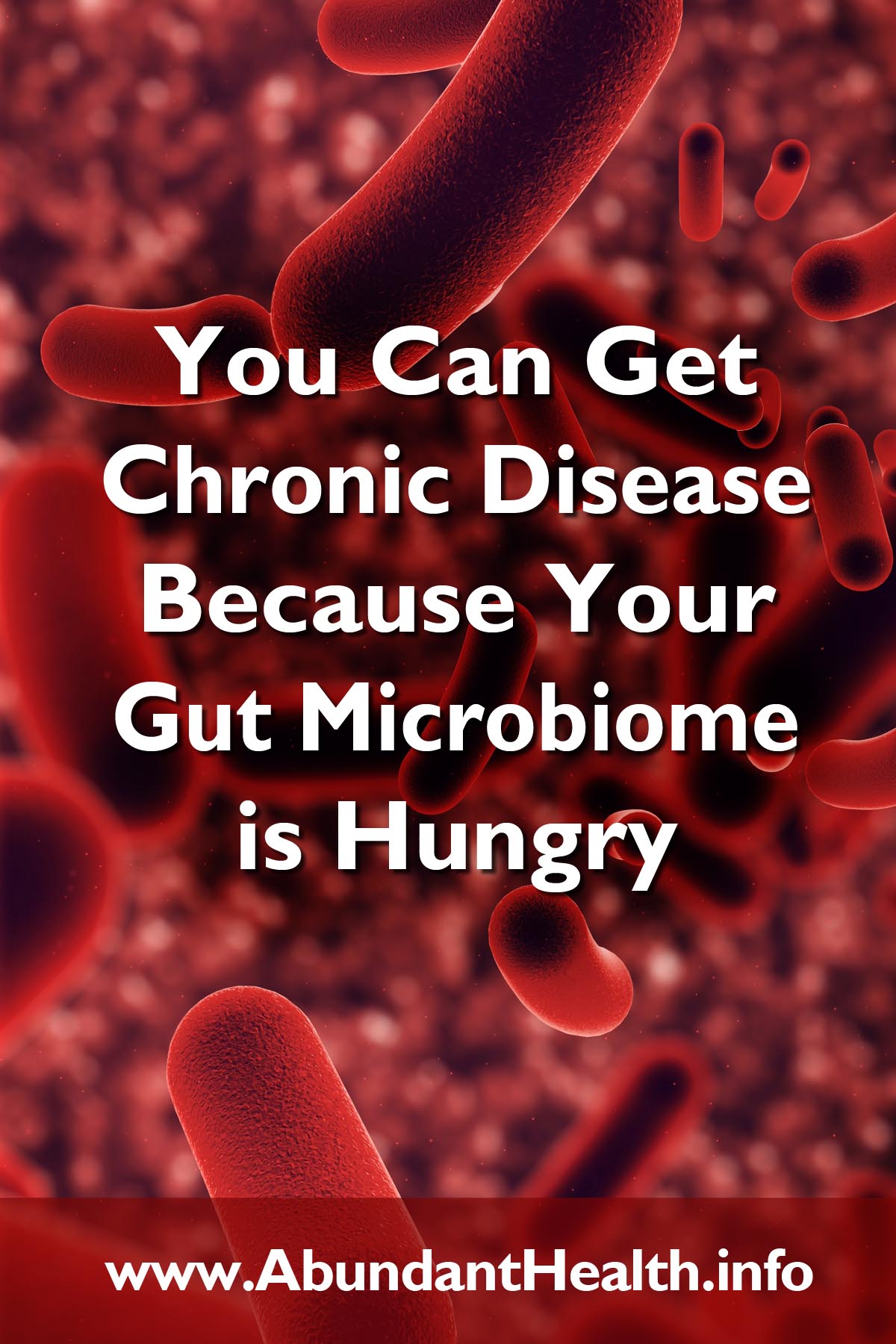Diet-related chronic diseases have reached a critical juncture in the U.S.1)EXECUTIVE SUMMARY: Biden-Harris Administration National Strategy on Hunger, Nutrition, and Health. The White House, September 27, 2022 Nearly half the population has prediabetes or diabetes.2)National Diabetes Statistics Report. Center of Disease Control Over 40% are overweight or obese.3)Adult Obesity Facts. Center of Disease Control One in nine people over the age of 65 has Alzheimer’s disease,4)2023: ALZHEIMER’S DISEASE – FACTS AND FIGURES. Alzheimer’s Association the development of which researchers are exploring the potential role of diet.5)Kellar D. Brain insulin resistance in Alzheimer’s disease and related disorders: mechanisms and therapeutic approaches. https://doi.org/10.1016/S1474-4422(20)30231-3 Poor diet is also linked to poor mental health,6)Penny M Kris-Etherton, Kristina S Petersen, Joseph R Hibbeln, Daniel Hurley, Valerie Kolick, Sevetra Peoples, Nancy Rodriguez, Gail Woodward-Lopez, Nutrition and behavioral health disorders: depression and anxiety, Nutrition Reviews, Volume 79, Issue 3, March 2021, Pages 247–260, https://doi.org/10.1093/nutrit/nuaa025 cardiovascular disease7)Lichtenstein A et.al. 2021 Dietary Guidance to Improve Cardiovascular Health: A Scientific Statement From the American Heart Association. https://doi.org/10.1161/CIR.0000000000001031 and cancer.8)Diet. National Cancer Institute Diet was responsible for nearly 1 in 5 deaths in the U.S.9)Why Good Nutrition is Important. Center for Science in the Public Interest. https://www.cspinet.org/eating-healthy/why-good-nutrition-important and accounted for over US$140 billion in U.S. health care spending in 2016.10)Bolnick H et.al. Health-care spending attributable to modifiable risk factors in the USA: an economic attribution analysis. https://doi.org/10.1016/S2468-2667(20)30203-6

Though American waists are getting bigger, research is showing that the gut microbiome – the bacteria living in our digestive tracts – and the energy-producing compartments of cells, the mitochondria, remain hungry for nutrients missing in the American diet.
I am a physician scientist and gastroenterologist who has spent over 20 years studying how food can affect the gut microbiome and whole body health. The ultraprocessed food that makes up an increasing part the American diet11)Filippa Juul, Niyati Parekh, Euridice Martinez-Steele, Carlos Augusto Monteiro, Virginia W Chang, Ultra-processed food consumption among US adults from 2001 to 2018, The American Journal of Clinical Nutrition, Volume 115, Issue 1, 2022, Pages 211-221, https://doi.org/10.1093/ajcn/nqab305. has removed vital nutrients from food. Adding those nutrients back may be important for health in part by feeding the microbiome and mitochondria that turn food into fuel.
Your health is what you eat
Research has consistently shown that the Mediterranean diet and other whole food diets are associated with better health and longer lives,12)Hui Duan, Jiani Pan, Min Guo, Jinwei Li, Leilei Yu, Liuping Fan, Dietary strategies with anti-aging potential: Dietary patterns and supplements, Food Research International, Volume 158, 2022, 111501, https://doi.org/10.1016/j.foodres.2022.111501. and ultraprocessed foods and drinks like soda, chips and fast food, among others, are linked with poor health outcomes such as diabetes, cardiovascular disease, cancer and other diseases.13)Zhang Y, Giovannucci E. Ultra-processed foods and health: a comprehensive review. https://doi.org/10.1080/10408398.2022.2084359
But improving the diet of an individual, let alone a population, is challenging. Whole foods are sometimes less convenient and less tasty for modern lifestyles and preferences. Furthermore, food processing can be beneficial by preventing spoilage and extending shelf life.14)Processed Foods and Health. Harvard School of Public Health Whole grain processing in particular extends shelf life by removing the germ and bran that otherwise rapidly spoil. Long-term storage of affordable calories has helped address food insecurity, a primary challenge in public health.
Much of the public health conversation around diet has focused on what to avoid: added sugars and refined carbs, some fats, salt and additives. But modern food processing, while increasing the concentration of some nutrients, has removed other key nutrients, producing potential long-term health costs.15)Mozaffarian, D. Dietary and policy priorities to reduce the global crises of obesity and diabetes. Nat Food 1, 38–50 (2020). https://doi.org/10.1038/s43016-019-0013-1 Equally important is what to add back into diets: fibers, phytonutrients, micronutrients, missing fats and fermented foods.16)Serrano JCE, Cassanye A, Martín-Gari M, Granado-Serrano AB, Portero-Otín M. Effect of Dietary Bioactive Compounds on Mitochondrial and Metabolic Flexibility. Diseases. 2016; 4(1):14. https://doi.org/10.3390/diseases4010014
Only 5% of the U.S. population gets sufficient fiber, a prebiotic nutrient linked to metabolic, immune and neurologic health.17)Quagliani D, Felt-Gunderson P. Closing America’s Fiber Intake Gap: Communication Strategies From a Food and Fiber Summit. American Journal of Lifestyle Medicine. 2017;11(1):80-85. doi:10.1177/1559827615588079 Americans are likely also deficient in phytonutrients, potassium and certain healthy fats linked to lower rates of cardiovascular disease and cancer.
Fermentation is nature’s version of processing, creating foods with natural preservatives, flavors and vitamins. Recent research suggests fermented foods can improve gut microbiome diversity and dampen systemic inflammation.18)Wastyk, Hannah C. et al. Gut-microbiota-targeted diets modulate human immune status. https://doi.org/10.1016/j.cell.2021.06.019

Figuring out which bioactive nutrients contribute to disease can help both individuals and institutions develop diets and foods that are personalized to different health conditions, economic constraints and taste preferences. It can also help maximize nutrients in a way that is convenient, affordable and familiar to the modern palate.
Of microbiomes and mitochondria
Understanding how nutrients affect the gut microbiome and mitochondria could help determine which ingredients to add to the diet and which to temper.
In your lower gut, bacteria transform undigested bioactive nutrients into biochemical signals that stimulate gut hormones to slow down digestion.19)Zhang, Lin et al. Butyrate in Energy Metabolism: There Is Still More to Learn. Trends in Endocrinology & Metabolism, Volume 32, Issue 3, 159 – 169. https://doi.org/10.1016/j.tem.2020.12.003 These signals also regulate the immune system, controlling how much of the body’s energy goes toward inflammation and fighting infection, and cognition,20)Zhy Y et al. Interactions Between Intestinal Microbiota and Neural Mitochondria: A New Perspective on Communicating Pathway From Gut to Brain. https://doi.org/10.3389/fmicb.2022.798917 influencing appetite and even mood.21)Philippe C, Szabo de Edelenyi F, Naudon L, Druesne-Pecollo N, Hercberg S, Kesse-Guyot E, Latino-Martel P, Galan P, Rabot S. Relation between Mood and the Host-Microbiome Co-Metabolite 3-Indoxylsulfate: Results from the Observational Prospective NutriNet-Santé Study. Microorganisms. 2021; 9(4):716. https://doi.org/10.3390/microorganisms9040716
The microbiome’s biochemical signals also regulate the growth and function of energy-producing mitochondria across many cell types, including those in fat, muscles, heart and the brain.22)Chartoumpekis D et al. Microbiota and mitochondria: Impact on cell signaling, physiology, and disease. https://doi.org/10.3389/fmicb.2022.1056499 When these cues are missing in ultraprocessed diets, mitochondria function less well,23)Serrano JCE, Cassanye A, Martín-Gari M, Granado-Serrano AB, Portero-Otín M. Effect of Dietary Bioactive Compounds on Mitochondrial and Metabolic Flexibility. Diseases. 2016; 4(1):14. https://doi.org/10.3390/diseases4010014 and their dysregulation has been linked to obesity,24)Cunarro J et al. Hypothalamic Mitochondrial Dysfunction as a Target in Obesity and Metabolic Disease. https://doi.org/10.3389/fendo.2018.00283 diabetes,25)Domenico S et al. Mitochondrial (Dys)function and Insulin Resistance: From Pathophysiological Molecular Mechanisms to the Impact of Diet. https://doi.org/10.3389/fphys.2019.00532 Alzheimer’s disease,26)Wang, W., Zhao, F., Ma, X. et al. Mitochondria dysfunction in the pathogenesis of Alzheimer’s disease: recent advances. Mol Neurodegeneration 15, 30 (2020). https://doi.org/10.1186/s13024-020-00376-6 mood disorders27)Giménez-Palomo A et al. The Role of Mitochondria in Mood Disorders: From Physiology to Pathophysiology and to Treatment. https://doi.org/10.3389/fpsyt.2021.546801 and cancer.28)Zong, Wei-Xing et al. Mitochondria and Cancer. https://doi.org/10.1016/j.molcel.2016.02.011 A better understanding of how diet could improve the function of the microbiome-mitochondria axis could help provide a way to reduce the burden of chronic disease.29)Damman C. Perspective: Nutrition’s Next Chapter – Bioactive Gaps & the Microbiome-Mitochondria Axis. https://doi.org/10.1016/j.advnut.2023.03.016
The Greek physician Hippocrates, regarded as the father of medicine, supposedly once said “Let food be thy medicine,” and a growing body research suggests that, yes, food can be medicine. I believe that shining a light on the connection between diet, health and the microbiome and mitochondria could help societies reach a bright future in which unhealthy aging isn’t an inevitability of growing older.

Stay Always Up to Date
Sign up to our newsletter and stay always informed with news and tips around your health.
This article is republished from The Conversation under a Creative Commons license. Read the original article.

Christopher Damman, M.D., is a board certified gastroenterologist at the Digestive Health Center at UW Medical Center and a UW associate professor of Gastroenterology and Medicine. He has a particular interest in the microbiome & functional foods, and he explores these themes as Editor-In-Chief at Gut Bites MD.
References
| ↑1 | EXECUTIVE SUMMARY: Biden-Harris Administration National Strategy on Hunger, Nutrition, and Health. The White House, September 27, 2022 |
|---|---|
| ↑2 | National Diabetes Statistics Report. Center of Disease Control |
| ↑3 | Adult Obesity Facts. Center of Disease Control |
| ↑4 | 2023: ALZHEIMER’S DISEASE – FACTS AND FIGURES. Alzheimer’s Association |
| ↑5 | Kellar D. Brain insulin resistance in Alzheimer’s disease and related disorders: mechanisms and therapeutic approaches. https://doi.org/10.1016/S1474-4422(20)30231-3 |
| ↑6 | Penny M Kris-Etherton, Kristina S Petersen, Joseph R Hibbeln, Daniel Hurley, Valerie Kolick, Sevetra Peoples, Nancy Rodriguez, Gail Woodward-Lopez, Nutrition and behavioral health disorders: depression and anxiety, Nutrition Reviews, Volume 79, Issue 3, March 2021, Pages 247–260, https://doi.org/10.1093/nutrit/nuaa025 |
| ↑7 | Lichtenstein A et.al. 2021 Dietary Guidance to Improve Cardiovascular Health: A Scientific Statement From the American Heart Association. https://doi.org/10.1161/CIR.0000000000001031 |
| ↑8 | Diet. National Cancer Institute |
| ↑9 | Why Good Nutrition is Important. Center for Science in the Public Interest. https://www.cspinet.org/eating-healthy/why-good-nutrition-important |
| ↑10 | Bolnick H et.al. Health-care spending attributable to modifiable risk factors in the USA: an economic attribution analysis. https://doi.org/10.1016/S2468-2667(20)30203-6 |
| ↑11 | Filippa Juul, Niyati Parekh, Euridice Martinez-Steele, Carlos Augusto Monteiro, Virginia W Chang, Ultra-processed food consumption among US adults from 2001 to 2018, The American Journal of Clinical Nutrition, Volume 115, Issue 1, 2022, Pages 211-221, https://doi.org/10.1093/ajcn/nqab305. |
| ↑12 | Hui Duan, Jiani Pan, Min Guo, Jinwei Li, Leilei Yu, Liuping Fan, Dietary strategies with anti-aging potential: Dietary patterns and supplements, Food Research International, Volume 158, 2022, 111501, https://doi.org/10.1016/j.foodres.2022.111501. |
| ↑13 | Zhang Y, Giovannucci E. Ultra-processed foods and health: a comprehensive review. https://doi.org/10.1080/10408398.2022.2084359 |
| ↑14 | Processed Foods and Health. Harvard School of Public Health |
| ↑15 | Mozaffarian, D. Dietary and policy priorities to reduce the global crises of obesity and diabetes. Nat Food 1, 38–50 (2020). https://doi.org/10.1038/s43016-019-0013-1 |
| ↑16 | Serrano JCE, Cassanye A, Martín-Gari M, Granado-Serrano AB, Portero-Otín M. Effect of Dietary Bioactive Compounds on Mitochondrial and Metabolic Flexibility. Diseases. 2016; 4(1):14. https://doi.org/10.3390/diseases4010014 |
| ↑17 | Quagliani D, Felt-Gunderson P. Closing America’s Fiber Intake Gap: Communication Strategies From a Food and Fiber Summit. American Journal of Lifestyle Medicine. 2017;11(1):80-85. doi:10.1177/1559827615588079 |
| ↑18 | Wastyk, Hannah C. et al. Gut-microbiota-targeted diets modulate human immune status. https://doi.org/10.1016/j.cell.2021.06.019 |
| ↑19 | Zhang, Lin et al. Butyrate in Energy Metabolism: There Is Still More to Learn. Trends in Endocrinology & Metabolism, Volume 32, Issue 3, 159 – 169. https://doi.org/10.1016/j.tem.2020.12.003 |
| ↑20 | Zhy Y et al. Interactions Between Intestinal Microbiota and Neural Mitochondria: A New Perspective on Communicating Pathway From Gut to Brain. https://doi.org/10.3389/fmicb.2022.798917 |
| ↑21 | Philippe C, Szabo de Edelenyi F, Naudon L, Druesne-Pecollo N, Hercberg S, Kesse-Guyot E, Latino-Martel P, Galan P, Rabot S. Relation between Mood and the Host-Microbiome Co-Metabolite 3-Indoxylsulfate: Results from the Observational Prospective NutriNet-Santé Study. Microorganisms. 2021; 9(4):716. https://doi.org/10.3390/microorganisms9040716 |
| ↑22 | Chartoumpekis D et al. Microbiota and mitochondria: Impact on cell signaling, physiology, and disease. https://doi.org/10.3389/fmicb.2022.1056499 |
| ↑23 | Serrano JCE, Cassanye A, Martín-Gari M, Granado-Serrano AB, Portero-Otín M. Effect of Dietary Bioactive Compounds on Mitochondrial and Metabolic Flexibility. Diseases. 2016; 4(1):14. https://doi.org/10.3390/diseases4010014 |
| ↑24 | Cunarro J et al. Hypothalamic Mitochondrial Dysfunction as a Target in Obesity and Metabolic Disease. https://doi.org/10.3389/fendo.2018.00283 |
| ↑25 | Domenico S et al. Mitochondrial (Dys)function and Insulin Resistance: From Pathophysiological Molecular Mechanisms to the Impact of Diet. https://doi.org/10.3389/fphys.2019.00532 |
| ↑26 | Wang, W., Zhao, F., Ma, X. et al. Mitochondria dysfunction in the pathogenesis of Alzheimer’s disease: recent advances. Mol Neurodegeneration 15, 30 (2020). https://doi.org/10.1186/s13024-020-00376-6 |
| ↑27 | Giménez-Palomo A et al. The Role of Mitochondria in Mood Disorders: From Physiology to Pathophysiology and to Treatment. https://doi.org/10.3389/fpsyt.2021.546801 |
| ↑28 | Zong, Wei-Xing et al. Mitochondria and Cancer. https://doi.org/10.1016/j.molcel.2016.02.011 |
| ↑29 | Damman C. Perspective: Nutrition’s Next Chapter – Bioactive Gaps & the Microbiome-Mitochondria Axis. https://doi.org/10.1016/j.advnut.2023.03.016 |
Leave a Reply